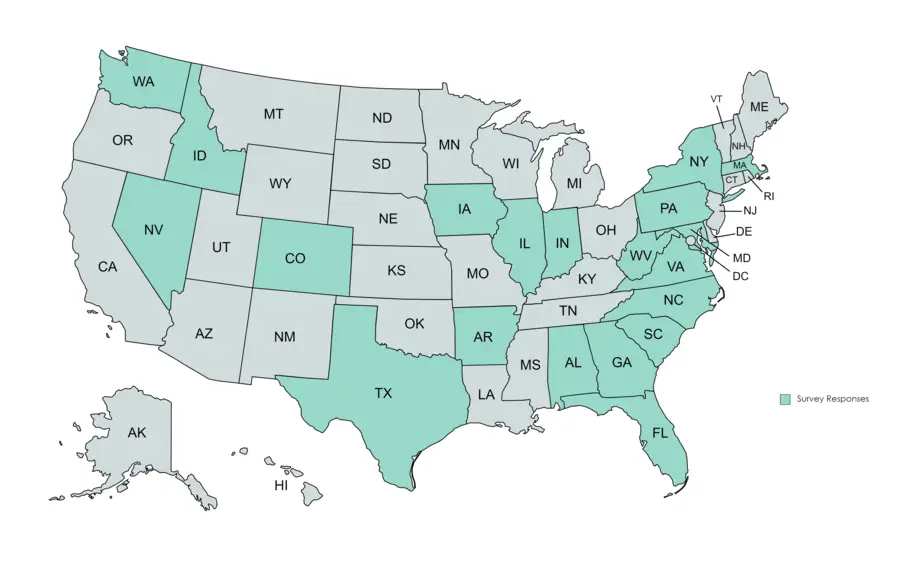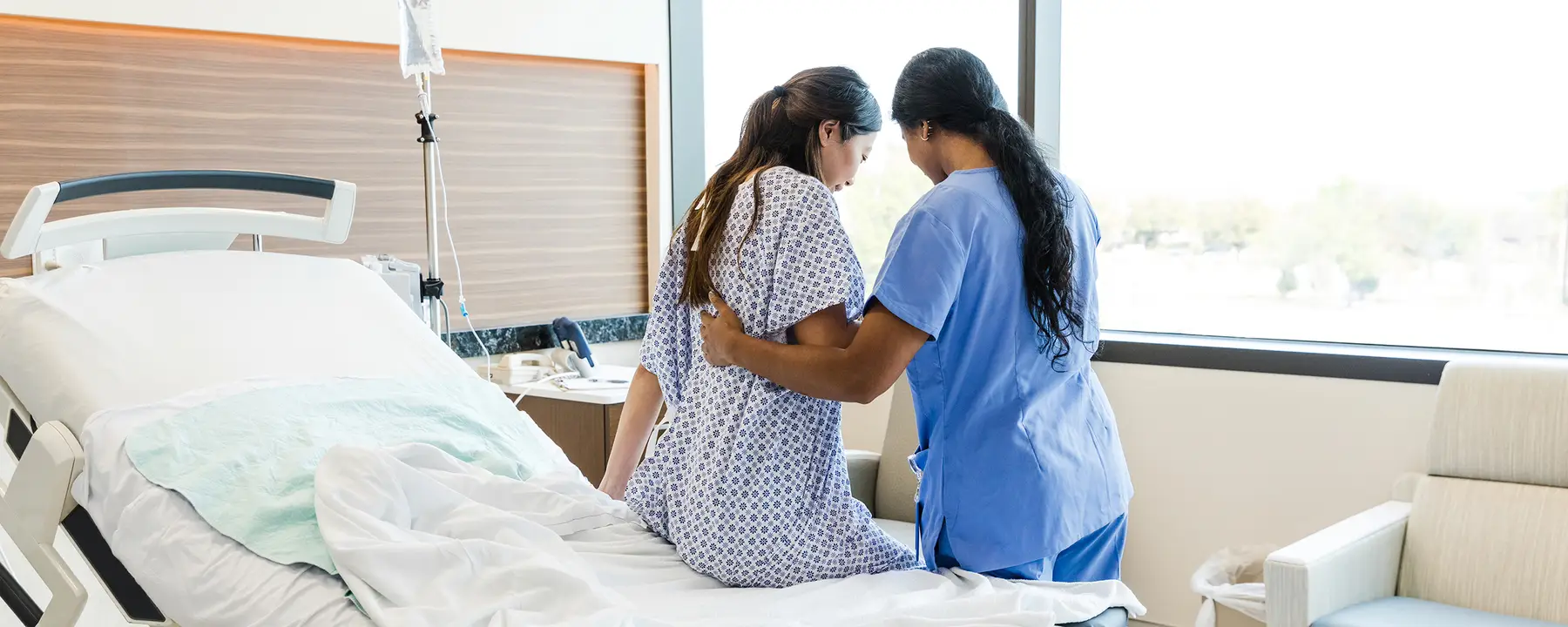Improve information-sharing and overall support for victims of interpersonal violence through a secure, online hospital-based platform to facilitate communication among responders
Objective
To provide forensic examiners with a single system that houses all the forms they need and allows them to send their reports to other users (e.g., law enforcement and victim service provider), enhancing multidisciplinary medico-legal collaboration.
Approach
We supported the development and assessment of the hospital-based platform implementation and conducted a landscape survey to understand the adaptation of standardized technology for providers treating patients who sustained injuries from interpersonal violence.
Impact
Our approach advances our knowledge of how technology used in medical settings may allow victims of crime to receive better care, recover, and connect with resources and legal systems to pursue justice and prevent revictimization.
Each year, thousands of healthcare workers treat patients for injuries caused by domestic, sexual, or physical violence. In many cases, an emergency department is the only place a victim of crime will go to seek help.
According to the Centers for Disease Control and Prevention (CDC) Web-based Injury Statistics Query and Reporting System, nearly 2 million people annually seek treatment at an emergency department for injuries sustained during an assault. Of those seeking treatment, less than half report the crime and even fewer receive assistance from victim service agencies upon discharge from the hospital. Healthcare settings play a pivotal role in connecting victims with resources, including criminal justice groups and communities that can ensure their safety, help them recover, and prevent revictimization.
To better understand this problem and facilitate communication among different systems, non-accidental injury and medical evidentiary exam documentation needs to be more effective. The current process used in many hospitals can face the following limitations:
- Unstandardized data collection procedures
- Paper-based medicolegal documentation forms
- Manual submission of form to law enforcement via fax or mail
- Lack of warm handoff to victim services for victims
Bringing Digital Solutions to Interpersonal Violence Victims in Emergency Room Settings
To help close the gap, RTI was funded through the Office for Victims of Crime (OVC) FY2020 Advancing the Use of Technology to Assist Victims of Crime solicitation the project – Advancing Hospital-Based Technology to Support Victims of Interpersonal Violence (OVCAT). Through OVCAT, RTI and our partners set out to create a streamlined, digital system for completing and transmitting medical evidentiary forms and documentation to address the issues around forensic examination documentation and antiquated submission processes.
To understand the applicability of a medicolegal platform more broadly, RTI also completed a landscape assessment to understand forensic examiner approaches to digital solutions that could standardize medio-legal documentation and ensure victims of violence are connected with community and criminal justice services. OVCAT sought to increase equity in response to victims by exploring the standardization of documentation, including kits and forms used for evidence and injury documentation.
Technology Development and Multi-site Implementation
With the help of our partners – MedReportGuard LLC, International Association of Forensic Nurses, and AEquitas – we gained insights in the development of a secure, online platform that acts as a single system for housing all forms needed by forensic examiners, called MRG Suite. The platform allows hospitals to transmit reports to law enforcement and initiate a warm handoff with victim services, meaning the referral for services is less burdensome for survivors because agencies receive consent to contact a victim.
The project team first worked to understand the current processes of those creating forensic documentation and referrals and those receiving those reports (i.e., law enforcement and victim service provider) through interviews focused on technology development and helpful practices for technology implementation.
After tailoring the system to meet the needs of the countries and forensic exam teams, MRG Suite included the following features that benefit patients and providers:
- Hospital-based non accidental injury reports
- Intimate partner violence reports
- Forensic medical evidence collection addendum
- Referral forms to victim service provides (e.g., support for childcare, restraining orders)
- Body mapping
- Multi-factor authentication
- Creation of new report features
After initial system testing, we worked with four pilot counties in California to receive user feedback and orient users to the platform. We scheduled one-on-one sessions with end users, including forensic examiners and potential recipients, to gather feedback on the platform’s functionality and usability. Overall, testers were excited to use the new system. They generally felt that MRG Suite seemed to be an improvement over their current processes. Testers specifically appreciated its easy navigation, improved digital body mapping capability, and features that auto filled some fields based on data previously entered elsewhere on the form. Simultaneously, we created training materials and resources to assist users to with onboarding the platform and accessing support.
We also designed a multi-stage implementation study, which included the pre-planning, adoption, and user experience with the platform including:
- Implementation evaluation focused on platform adoption.
- Evaluability assessment of the economic drivers impacting its fidelity, sustainability, and cost-efficiency.
We learned that across pilot counties, implementation varied greatly. Predominately, agencies piloting MRG Suite staged their roll out, which helped them onboard forensic examiners and recipients over time. This was particularly important given that the level of effort needed to onboard individuals seemed to be significantly more than anticipated. While all counties onboarded a wide variety of users, adoption differed. Forensic examiners were the most consistent users of the platform. Many law enforcement agencies began using MRG Suite, while victim support services and hospital billing administrators seemed to use the system less frequently.
Through each stage of OVCAT, RTI ensured the components and lessons learned about the platform and process were translatable for a broader audience, including understanding the prospect and future uses of technology, such as MRG Suite, to aid forensic examination documentation and victim referral within California and nationally.
Conducting a National Survey for Standardized Documentation of Interpersonal Violence Injuries
In order to understand how a digital medicolegal system could support additional communities outside of the four pilot counties, RTI completed a data-gathering effort from forensic exam teams to understand current practice related to data collection standardization, quality victim referral, and other technology or practice innovations being implemented around the country, using the following approaches:
- Conduct a national survey of forensic examiners, program managers, and directors
- Establish the current state of forensic exam documentation, standardization, and technology use
- Conduct one-on-one follow-up interviews with those who used standardized processes or technology to connect victims with support
By the Numbers
0
online survey respondents
0
follow-up interviews
0
states represented
Map of Survey Respondents

National Landscape Assessment Survey and Interview Findings
The results of the survey gave our team a better understanding of how forensic exam teams can use technology to support documentation of interpersonal injuries. The landscape survey also explored the response of healthcare workers adopting standardized documentation procedures.
Based on the survey respondents, most interviewees favored a national minimum documentation standard that could be customized to states and regions, accounting for cultural differences. Participants also believed this would create a better standard of healthcare and evidence collection regardless of the criminal implications. However, most interviewees cautioned against a standardized procedure that is too restrictive. For example, procedures and kits should not limit a medical professional’s creativity to “think outside of the box” when addressing a patient’s history or a trauma. The survey also recognized that standards would be dependent on differing capabilities of crime labs across the nation.
Benefits of Standardized Documentation for Interpersonal Violence Victims
- Mitigates disparities in experience and skill level among medical examiners
- Ensures patients received comparable care and evidence documentation
- Guarantees that legal systems have a sufficient level of detail of the documentation needed to successfully pursue criminal prosecution
Benefits of Standardized Documentation for Medical Providers
- Cuts down on time needed to train providers from different hospitals or programs
- Helps providers feel more prepared to conduct an exam, especially for locations that receive few exams
- Ensures that no critical information is missing
Additionally, the survey responses indicated a few challenges for both providers and victims. Many interviewees felt that establishing a consensus among multidisciplinary stakeholders, including hospital staff, law enforcement, and forensic investigators, would be challenging. Also, the length of the standardized forms could be problematic. If too long, it could be cumbersome to the provider and victim. If too short, it could lack important questions or omit the necessary medicolegal information.
Hospital Technology Consideration for Standardized Documentation of Interpersonal Violence Injuries
While the idea of a standardized documentation platform is widely accepted among survey respondents, the technology has limitations. Forensic teams rely on sensitive photographs, requiring a platform that uses security precautions that protect a victim’s personal data. Additionally, the technology would need to be affordable for widescale adoption among providers.
This survey, along with the implementation pilot project of a digital medicolegal technological solution for completing and transmitting medical evidentiary forms and documentation, is a testimony to RTI’s commitment to exploring evidence-based solutions to improve the human condition. Setting standards for practice and documentation of interpersonal violence supports medical providers and forensic professionals as they give care and seek justice for victims.
- Aequitas
- MedReportGuard, LLC
- International Association of Forensic Nurses



